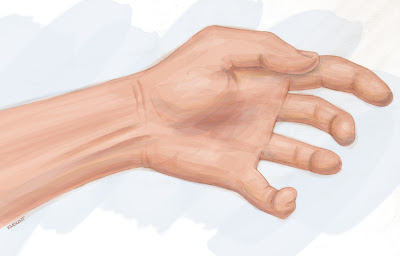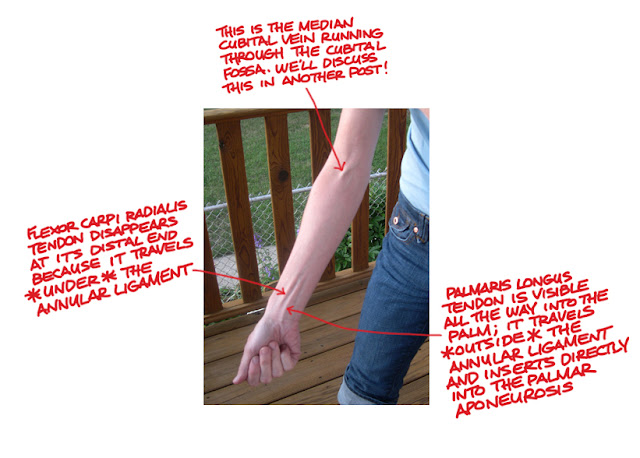It stands to reason that a structure's design enhances its function. It stands to reason that its size, shape and materials best suit that function. It stands to reason that, in multiples, that structure has latitude for variability while maintaining the same basic parts. And maybe most of all, it stands to reason that the best examples of such a design would be found on the human body.
While most any anatomical structure could provide a satisfying conclusion to this goofy little rumination, I think one of the most interesting and unique examples is the lovely, complex, variable yet constant structure of the human external ear.
When learning to draw any part of the human body, we're taught, of course, to remember what must always be shown, what is constant. But learning those things shouldn't come at the cost of remembering the variations, the ways in which these structures may differ from person to person. While most human ears can be drawn with the same basic parts and pieces, the relative sizes of and relationships among those pieces can vary a great deal. Drawing the ear becomes much easier (and a lot more interesting) when we remember both the constants and the variables.
The ear is constructed of an outer rim, the helix, and an inner rim, the antihelix. These two structures form sort of an oblong bowl shape. The bottom of that bowl is the concha; this is the deepest point before we get to the external auditory meatus, the opening in the temporal bone that leads to the middle and inner ear structures. On the anterior side of the ear, there is a small notch (the anterior notch) which lies above the tragus, a small flap of cartilage. One of the most common mistakes in rendering the ear is drawing a connection between the helix and the anterior notch. They don't connect there, but it seems their proximity to one another makes us think they should. The difference can be seen in the illustrations below.
The helix actually arises on its leg from the bottom of the concha, usually very gradually. Then it encircles the entire ear and end at the very bottom, at the lobe. The antihelix appear to emerge from underneath the upper portion of the helix, on two legs. Those legs merge together and the antihelix curves around posteriorly as a single unit until it ends at the antitragus (just opposite the tragus, which is what the name antitragus means.)
In addition to names for external ear structures, we also have names for the spaces and depressions among them. We have the intertragical notch, which is the small notch between the tragus and antitragus. We have the scapha, which is the long valley between the helix and the antihelix. And we have the triangular fossa, which is the depression between the two legs of the antihelix.
By the way, scapha is Latin for boat, and it seems that anatomical structures with a depressed center (like a boat) often have this name or some variant of it. We have a scaphoid bone in our wrist which has a depressed shape. Navicular means the same thing, and we have a navicular bone in our foot that also has a depressed shape.
Most of the above mentioned structures are composed of cartilage, which is the ideal material for the human external ear, as it's flexible but it holds its shape. If it were entirely skin and fatty tissue, it would flop over on itself and lose its satellite dish shape that draws sound waves into the auditory meatus. On the other hand, if the external ear was made of bone, it would hold its shape but it would break easily. So most of the external structure is composed of cartilage, although the lobe is mostly fatty tissue, which is why it's floppier than the rest of the ear.
One of the most noticeable variations in external ear anatomy is that of free lobes vs. attached lobes. This is a genetic trait. Although there's not 100% consensus, it's widely believed that attached earlobes are the recessive trait. If you have attached lobes, this means you most likely have two recessive alleles for it.
Another variation among ears is the depths of the sunken areas. The concha, scapha, and triangular fossa range from very shallow to very deep. In addition, the intertragical notch (the small notch between the tragus and the antitragus) varies somewhat in width from one individual to the next.
I would also like to write about rendering the ear and its shapes from a variety of other angles, but this post has gone on long enough! Shall we save it for another day?
It also stands to reason that my lovely ear models deserve a load of thanks! They include family members, neighbors and students: Daniel, Henry B., Henry G, Hillary, Jeff, Nick, Sean, Stephanie, Theresa, and Thomas.













